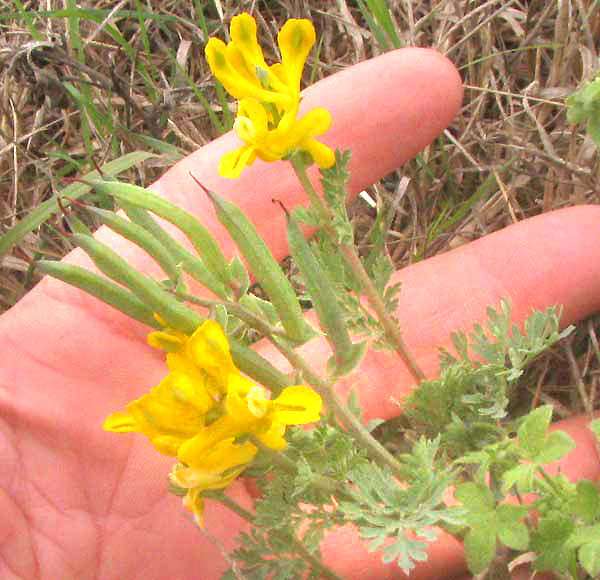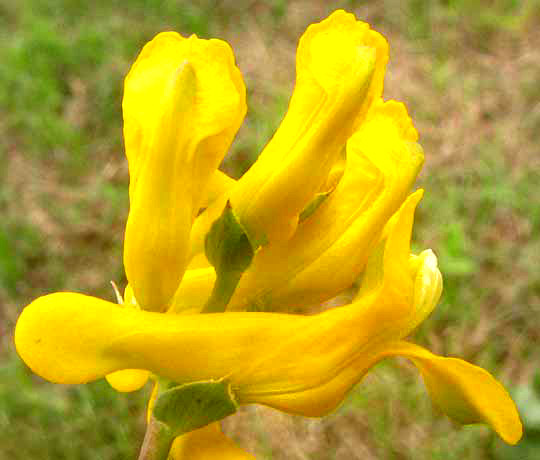Excerpts from Jim Conrad's
Naturalist Newsletter

from the March 9, 2014 Newsletter issued from the Frio Canyon Nature Education Center in the valley of the Dry Frio River in northern Uvalde County, southwestern Texas, on the southern border of the Edwards Plateau; elevation ~1750m (~5750 ft); N29.62°, W99.86°; USA
SCRAMBLED EGGS
Back East in springtime wooded valleys I'm used to seeing a delicate and pretty wildflower called Golden Corydalis, Corydalis flava. In Uvalde nowadays a very similar but more robust plant occurs as a weed along sidewalks and in abandoned lots. That's it above, flowering and fruiting, and showing its much dissected leaves.
A close-up of the interesting, bilaterally symmetrical flowers is shown below:

Leaves, flowers and fruits are all similar to the East's Golden Corydalis, except that everything is larger and tougher. Our sidewalk plant also is a corydalis, CORYDALIS CURVISILIQUA, and despite its weediness it's a native American plant, occurring in the south-central US from Kansas through Oklahoma and Texas into northern Mexico. Its common names include Scrambled Eggs, Large-bracted Corydalis, Golden Smoke, Curvepod Fumewort, and Curvepod. Why the name Scrambled Eggs, I don't know.
Scrambled Eggs is described as living in bottomlands, prairies, plains, foothills, mesas, ditches, railroad embankments, and washes in loose, often sandy, dry soil.
The Flora of North America assigns the genus Corydalis to the Fumitory Family, the Fumariaceae, but some experts place it in the Poppy Family, the Papaveraceae. Whichever family it occupies, also in that family you find the famous wildflower known as Dutchmans-breeches.
An important field mark for Corydalis species is the long "spur" or slender baglike structure projecting backwards from the flower's mouth, clearly visible in our flower close-up.